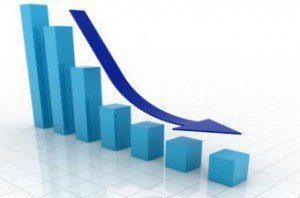 After climbing to their highest level in over seven years, mortgage rates eased up on their accelerated growth, declining 10 basis points to 4.56 percent according to the latest Freddie Mac [1] Primary Mortgage Market Survey released on Thursday. The survey found that rates declined for the first time in four weeks driven by recent trade and geopolitical issues.
After climbing to their highest level in over seven years, mortgage rates eased up on their accelerated growth, declining 10 basis points to 4.56 percent according to the latest Freddie Mac [1] Primary Mortgage Market Survey released on Thursday. The survey found that rates declined for the first time in four weeks driven by recent trade and geopolitical issues.
While the 30-year fixed-rate mortgage was down from 4.66 percent last week [2] to 4.56 percent, a year ago the rates stood at 3.94 percent. “The decline was driven by recent trade and geopolitical issues, which led to a sudden decrease in long-term Treasury yields,” said Sam Khater, Chief Economist at Freddie Mac.
The weekly report indicated that 15-year fixed-rate mortgage fell to 4.06 percent this week from 4.15 percent. At the same time last year, the rate was 3.19 percent.
“Treasury rates dropped dramatically lower this week as Italian political turmoil caused investors to prefer Treasury investments. Yields dropped to as low as 2.77 percent on Tuesday—30 basis points from one week prior,” said Danielle Hale, Chief Economist at Realtor.com [3]. “Mortgage rates followed but didn’t fall quite as far. While this is the biggest move lower in a year, since April 2017, mortgage rates are still 62 basis points higher than this time one year ago.”
In terms of rates affecting homebuyers, Khater said, “Confident American consumers shrugged off the market volatility, as purchase mortgage applications continued to trend higher from a year ago.” Heading into the peak homebuying season, he anticipated a strong demand even though “affordability pressures continue to put a strain on the budget of some would-be buyers.”
“Homebuyers in the market can take advantage of the tumult and lock-in lower rates, but don’t count on these low rates to last,” Hale said. “Rates will begin to climb again as uncertainty wanes. In fact, Treasuries have already rebounded slightly. Mortgage rates are expected to approach 5 percent by the end of the year.”
However, according to Khater, “Even if rates climb closer to 5 percent, sales have room to grow more, but only if current supply levels start increasing more meaningfully.”